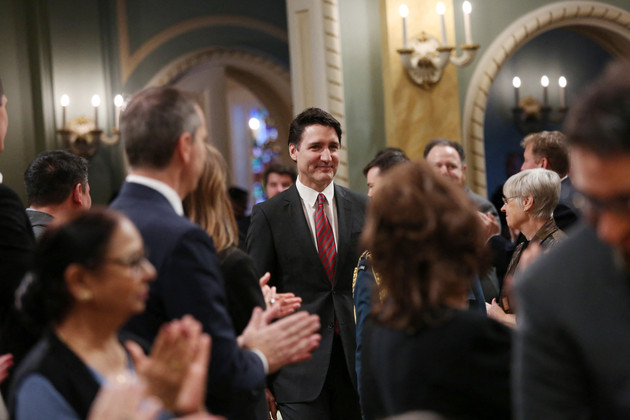Liberals Demand Trudeau’s Exit as Leadership Crisis Deepens
Prime Minister Justin Trudeau faces mounting pressure to step down as internal dissent grows within his party, raising questions about his leadership ahead of the 2025 federal election.
Prime Minister Justin Trudeau, on a ski vacation in British Columbia, is grappling with calls from a majority of his caucus to resign amid waning support and declining poll numbers. Liberal MPs, increasingly vocal about their dissatisfaction, are urging Trudeau to step aside before Parliament resumes in January, with many citing doubts over his ability to lead the party to victory in the 2025 election.
The latest wave of dissent comes in the aftermath of Chrystia Freeland’s unexpected resignation as deputy prime minister, which sent shockwaves through Ottawa. Freeland’s exit has exacerbated tensions within the party, with MPs citing internal disagreements over policy directions and Trudeau’s handling of Trump’s looming tariff threats as key issues.
“Prime Minister Justin Trudeau no longer has the support of caucus and, to maintain dignity, he should immediately tender his resignation,” wrote Calgary MP George Chahal in a strongly worded letter to caucus on Dec. 27.
A Party at Breaking Point
In a recent virtual meeting, 51 Liberal MPs from Ontario—the party’s largest caucus group—unanimously conveyed a message to Trudeau: It’s time to resign.
“We’ve reached a critical mass,” one attendee said, speaking on condition of anonymity. “This level of discontent has never been seen before.”
The Atlantic caucus, once a cornerstone of Liberal support, has also distanced itself from Trudeau. MPs from the region believe the party’s best chance of success lies in new leadership, particularly against Conservative leader Pierre Poilievre, who has surged in popularity by addressing Canada’s housing and affordability crisis with populist messaging.
“Time is of the essence,” Atlantic Caucus Chair Kody Blois wrote in a Dec. 23 letter to Trudeau. “It is no longer tenable for you to remain as leader. We need to begin the transition process immediately.”
Trudeau’s Next Move
Despite the mounting pressure, Trudeau has made no public statements about his plans. Sources close to the prime minister suggest he is focused on leaving the party in the best possible shape, prioritizing a smooth transition over his political legacy.
“There’s no mechanism to remove him internally—it’s a decision only he can make,” a senior Liberal source explained.
Liberal MPs expect a definitive answer when Trudeau returns to Ottawa on Jan. 6. Many are demanding an emergency caucus meeting, while others have privately stated they won’t seek re-election if Trudeau remains leader.
Political and Economic Uncertainty
The stakes are high for Canada as it faces potential instability on multiple fronts. The return of Donald Trump to the U.S. presidency in three weeks is expected to escalate trade tensions, with a proposed 25% tariff on Canadian goods threatening economic fallout.
Internally, Trudeau’s team remains divided over how to navigate these challenges. Earlier in December, the prime minister was briefed on data suggesting a possible pathway to a minority government win, based on strong voter turnout in Quebec and renewed Atlantic support. However, Freeland’s resignation and the recent caucus revolt have significantly undermined those projections.
Quebec Caucus Chair Stéphane Lauzon denied reports that his group had formally called for Trudeau’s resignation, stating, “No letter has been sent to the prime minister. What happens in the Quebec caucus stays in the caucus.”
As the clock ticks toward Parliament’s return, the Liberal Party faces a pivotal decision: Will Trudeau step aside to pave the way for new leadership, or will he remain at the helm, risking further division?
For now, all eyes are on the prime minister as the nation waits for his next move.

